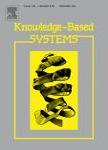版权所有:内蒙古大学图书馆 技术提供:维普资讯• 智图
内蒙古自治区呼和浩特市赛罕区大学西街235号 邮编: 010021

作者机构:Xi An Jiao Tong Univ Sch Math & Stat Xian Peoples R China
出 版 物:《KNOWLEDGE-BASED SYSTEMS》 (Knowl Based Syst)
年 卷 期:2021年第227卷
核心收录:
学科分类:08[工学] 0812[工学-计算机科学与技术(可授工学、理学学位)]
基 金:Science and Technology Pro-gram of the Chinese Ministry of Science and Technology [2020AAA0106302] National Natural Science Foundation of China [61876150, 12026609] Key Re-search and Development Program of Shaanxi Province [2021SF188] Science and Technology Program of the City of Xi'an [20YXYJ0009-12, XA2020RKXYJ0105]
主 题:Orthogonal Nonnegative Matrix Factorization Deep autoencoder network Auxiliary function Multiplication update rule
摘 要:Orthogonal Nonnegative Matrix Factorization (ONMF) offers an important analytical vehicle for addressing many problems. Encouraged by record-breaking successes attained by neural computing models in solving an assortment of data analytics tasks, a rich collection of neural computing models has been proposed to perform ONMF with compelling performance. Such existing models can be broadly classified into the shallow-layered structure (SLS) based and deep-layered structure (DLS) based models. However, SLS models cannot capture complex relationships and hierarchical information latent in a matrix due to their simple network structures and DLS models rely on an iterative procedure to derive weights, leading to a less efficient solution process and cannot be reused to factorize new matrices. To overcome these shortcomings, this paper proposes a novel deep autoencoder network for ONMF, which is abbreviated as DAutoED-ONMF. Compared with SLS models, the newly proposed model is capable of generating solutions with good interpretability and solution uniqueness like original SLS models, yet the new model attains a superior learning capability thanks to its deep structure employed. In comparison with DLS models, the new model trains a reusable encoder network to directly factorize any given matrix with no need to repeatedly retrain the model for factorizing multiple matrices using a tailor-designed network training procedure. Proof of the procedure s convergence is presented with an analysis of its computational complexity. The numerical experiments conducted on several publicly data sets convincingly demonstrate that the proposed DAutoED-ONMF model gains promising performance in terms of multiple metrics. (C) 2021 Elsevier B.V. All rights reserved.